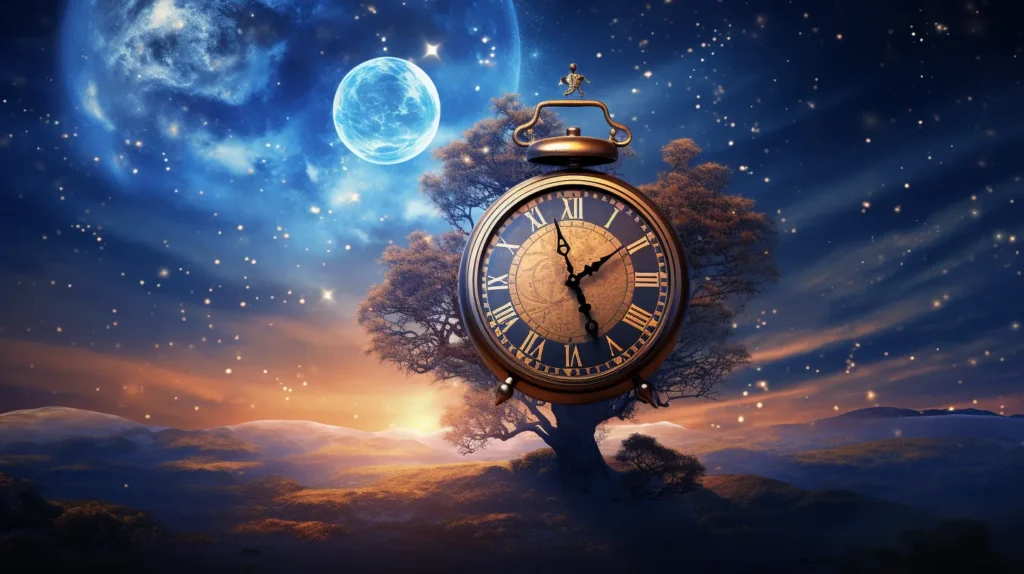Spring Daylight Savings 2024 starts at 2 a.m. on March 10, 2024, and ends on Sunday, Nov. 3, 2024
Get ready to feel a bit groggy tomorrow because you’re losing an hour of sleep overnight! Daylight savings 2024 time kicks in at 2 a.m. on March 10, 2024, which is the second Sunday of March.
Yep, that means the morning will be darker for a bit longer than you’re used to. But the good news? Daylight will hang around an hour longer into the afternoon and evening, giving you more time to enjoy the sunshine!
Table of Contents

Good news! Thanks to the wonders of modern technology, your smartphones and watches will magically adjust to the time change. However, if you have any analog watches, appliances that tell time, or old-school clocks lying around your house, you’ll need to manually adjust those.
Here’s everything you need to know about the time change—and a quick reminder that it’s “daylight saving time,” not “savings,” as it’s often mispronounced.
Read More: Akira Toriyama’s net worth: Biography, age, Manga, Anime
What is daylight saving time?
Daylight saving time, happening from March to November, is when most Americans adjust their clocks by one hour. In March, we “spring forward,” losing an hour to add more daylight to the evenings. Then, in November, we “fall back,” gaining an hour to add more daylight to the mornings.
Remember, the first day of spring is Tuesday, March 19, which comes nine days after the time change.

when does daylight savings time start in 2024?
Get ready for the time change at 2 a.m. on Sunday, March 10. Daylight saving time starts on the second Sunday of March and ends on the first Sunday of November.
when does daylight savings end in 2024?
This year, daylight saving time ends on Sunday, Nov. 3, 2024, when clocks “fall back.”
Why does daylight saving time matter?
Daylight saving time, according to the National Institute of Standards and Technology, is when “daylight” begins an hour later in the morning and lasts an hour longer in the evening. This adjustment aims to keep the hour of daylight aligned with the time when most people are active outside.
The idea behind daylight saving time is to save energy. During the warmer months, when daylight saving time is typically observed, more people tend to be outside and active. This means they’re less likely to be at home using energy, which can lead to energy savings overall.

why does daylight saving time exist?
The story behind the founding of daylight saving time is quite fascinating and has several different versions. Farmers were initially credited with starting the practice to have more daylight hours, but they weren’t actually in favor of it when it was introduced. Benjamin Franklin’s involvement is often mentioned, but it’s based on a satirical essay he wrote in 1784.
Daylight saving time began in 1916 when Germany implemented it to conserve fuel during World War I. The U.S. Embassy in Berlin informed their counterparts in Washington, D.C. about the change, noting Germany’s belief that it would save money by reducing the use of artificial lights. Other European countries followed suit, and in 1918, the United States adopted daylight saving time as well.
However, the story took twists and turns over the years. In 1919, Congress repealed daylight saving time despite President Woodrow Wilson’s attempt to veto the decision. States were then allowed to choose whether to continue observing it. During World War II, the entire country observed daylight saving time throughout the year. Congress tried to make this permanent in 1974 to save energy, but the attempt failed.
It wasn’t until 1966 that the Uniform Time Act established the system we know today. Originally, daylight saving time began in April and ended in October, but later revisions set the clocks forward on the second Sunday in March and back on the first Sunday in November.

what three U.S. states do not observe daylight saving time?
Several states and territories in the United States choose not to observe daylight saving time. Arizona hasn’t observed it since 1968, although the Navajo Nation, which spans parts of Arizona, does recognize the time change. Hawaii also opted out of daylight saving time in 1967.
Additionally, the territories of American Samoa, Guam, the Northern Mariana Islands, Puerto Rico, and the U.S. Virgin Islands do not observe daylight saving time.
Outside of the U.S., most of the world also doesn’t follow daylight saving time. According to the Pew Research Center, only about a third of the world observes it. The majority of countries that do are in Europe, with a few in Latin America and the Caribbean. In Africa, Egypt is the sole nation to use daylight saving time.
Why don’t Arizona and Hawaii participate in daylight saving time?
Hawaii chose to opt out of the Uniform Time Act due to its proximity to the equator. Since the sun rises and sets around the same time each day year-round, daylight saving time was deemed unnecessary.
Arizona participated in daylight saving time in 1967 but faced energy consumption issues. Contrary to the rest of the country, which was saving fuel, Arizona experienced a surge in energy usage to cope with the extra hour of daylight, as reported by Arizona State University.
However, it’s worth noting that the Navajo Nation, located in the northeast corner of the state, continues to observe daylight saving time despite Arizona’s decision not to participate.

The end of daylight savings 2024 will be permanent?
There have been efforts to end daylight saving time nationwide, but it’s unlikely to happen in 2024. In 2022, the Senate passed a bill to make daylight saving time permanent and stop the clock changes. However, the House didn’t vote on it before time ran out, so it didn’t become law.
A new version of the bill was introduced in March 2023, but it’s still in committee in both the House and the Senate. This means it hasn’t progressed to the stage of being voted on by the full chambers.
A CBS News/YouGov poll in 2022 found that nearly 80% of Americans supported changing the current system. Specifically, 46% liked the idea of permanently shifting an hour of daylight from the morning to the evening.
when does time spring forward?
Spring Daylight Savings 2024 starts at 2 a.m. on March 10, 2024, and ends on Sunday, Nov. 3, 2024